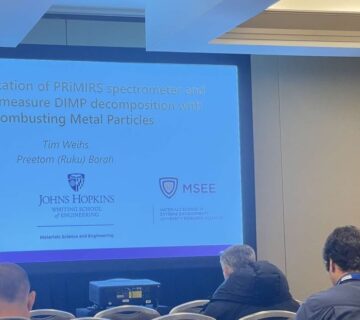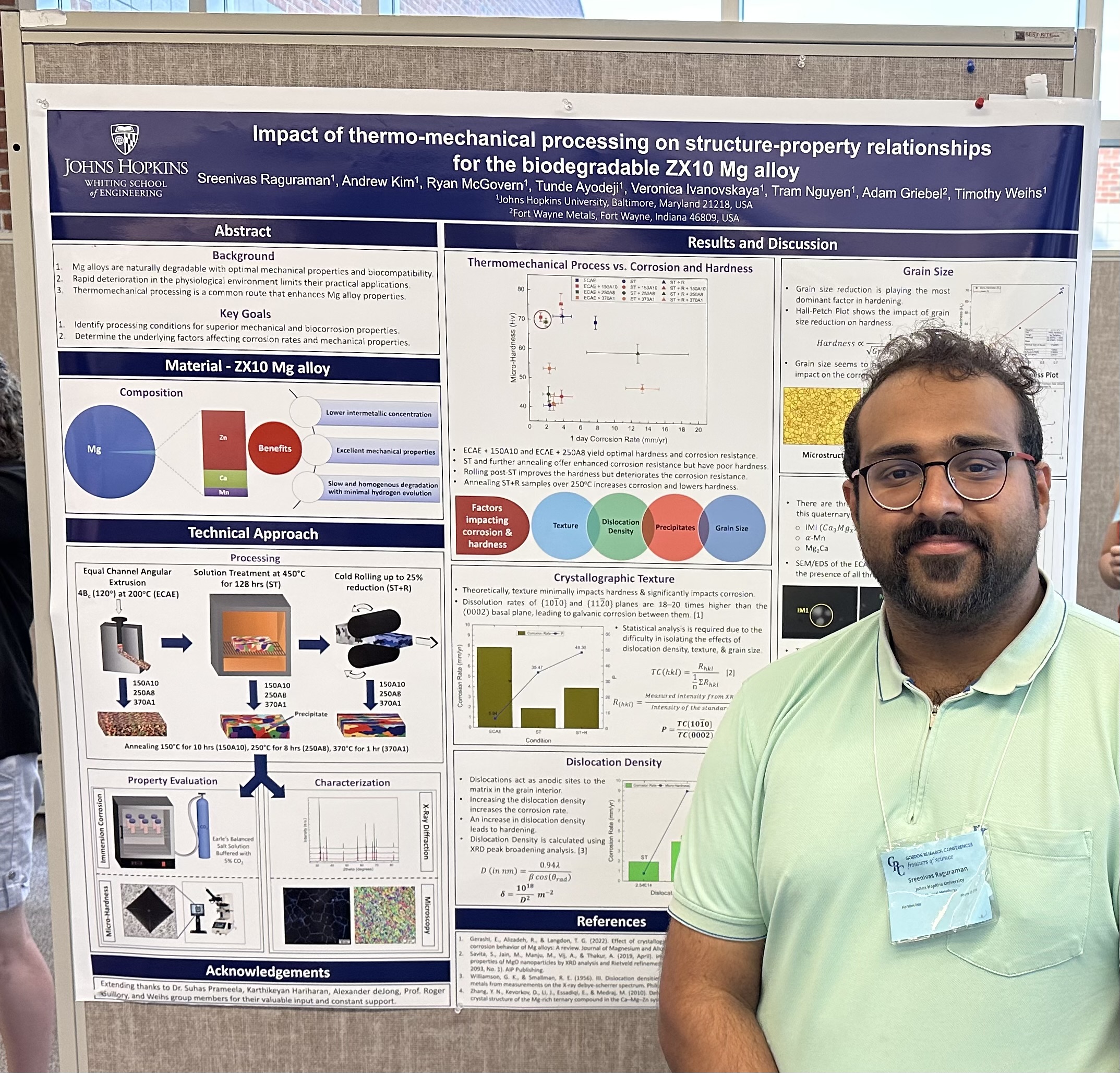Congratulations Dr. Fite!
Abstract:
Aluminum is one of the most globally ubiquitous and versatile materials, useful for structural, electronic, and reactive applications. Fully leveraging aluminum’s natural advantages depends upon a thorough understanding of structure-processing-property relationships and tailored alloy formulations. However, conventional Al alloy formulations and processing approaches may not be optimized for novel application domains (like custom Al alloys for bio-and chem-agent defeat) or novel manufacturing methods (like Additive Manufacturing (AM)).
Conventional heat treatments at high temperatures, for example, are not always optimized for the refined and complex microstructures in as-built AM parts. Though as-built AlSi10Mg includes performance-enhancing refined eutectic cells, these are invariably paired with performance-impairing melt pool boundaries, where the cell network coarsens and breaks down. Eliminating melt pool boundaries and their associated anisotropy motivates conventional heat treatments, but at the cost of removing the AM-specific eutectic cell strengthening. In Aims 1 and 2, we compare the impacts of conventional (T6- with a high-temperature solution heat treatment) and alternative (direct aging) thermal treatments on microstructure, supersaturation, hardness, tensile properties, fracture, strain-hardening, and thermal stability. Direct aging complements AlSi10Mg’s as-built microstructure, leveraging the supersaturated as-built microstructure and achieving superior thermal stability and performance by preserving the as-built cell network and its exceptional strain-hardening capacity. Similar as-built eutectic cells, which closely depend on build parameters and do not require post-processing, may offer insights for both future alloy design and unique promise as potential enablers of voxel-by-voxel AM local property control.
Nevertheless, retaining AlSi10Mg’s eutectic cells, and the associated inhomogeneous melt pool (MP) microstructure, necessitates local characterization of melt pool impacts. Melt pool center and boundary microstructures can vary significantly with boundaries revealing a coarsening and breakdown of the refined cellular network. Bulk characterization techniques, however, often lack the resolution to quantify the local deformation on the length scale of a melt pool boundary that ranges from 1 to 100 µm. Therefore, in Aim 3, we use in-situ scanning electron microscopy (SEM) microtensile experiments on AlSi10Mg samples to compare the relative yield behavior and deformation uniformity throughout microstructural regions, particularly around the MP boundaries. Differences in the local mechanical response – deformation, strain hardening, and yield – are reported between the MP boundaries and centers. These differences in deformation are correlated to specific microstructural features like cell size, cell connectedness, cell eccentricity, and grain size. Quantitative correlations of local deformation with relevant microstructural features, as presented here, will aid modelers and the additive manufacturing (AM) community in predicting and controlling AM AlSi10Mg part performance more precisely.
Precision performance is critical for Al-based reactive materials for bio- and chem-agent defeat and neutralization. Effectively neutralizing stockpiles of these harmful agents (without disseminating them) depends on tailored ignition and combustion performance through careful selection of complementary reactive alloying elements. However, the prodigious alloy design space necessitates efficient, high-throughput experimental techniques for systematic alloy screening. In Aim 4, we demonstrate a novel combinatorial approach to alloy design- via physical vapor deposition of chemical gradients- to explore optimized reactive alloy compositions in the Al-Zr and Al:8Mg-Zr systems. We characterize the impacts of trace Zr content on ignition and combustion using wire ignition and a novel combustion chamber.



